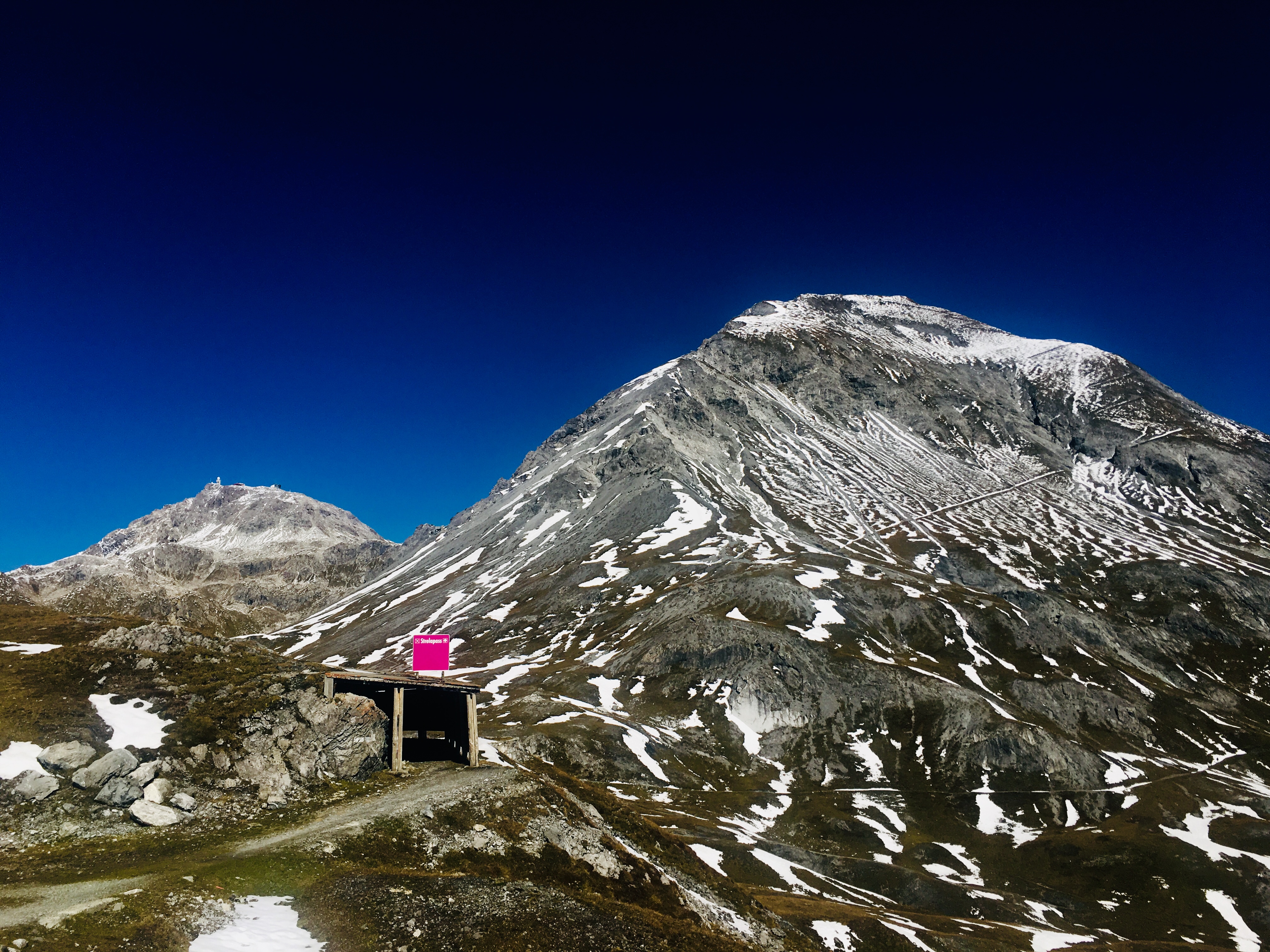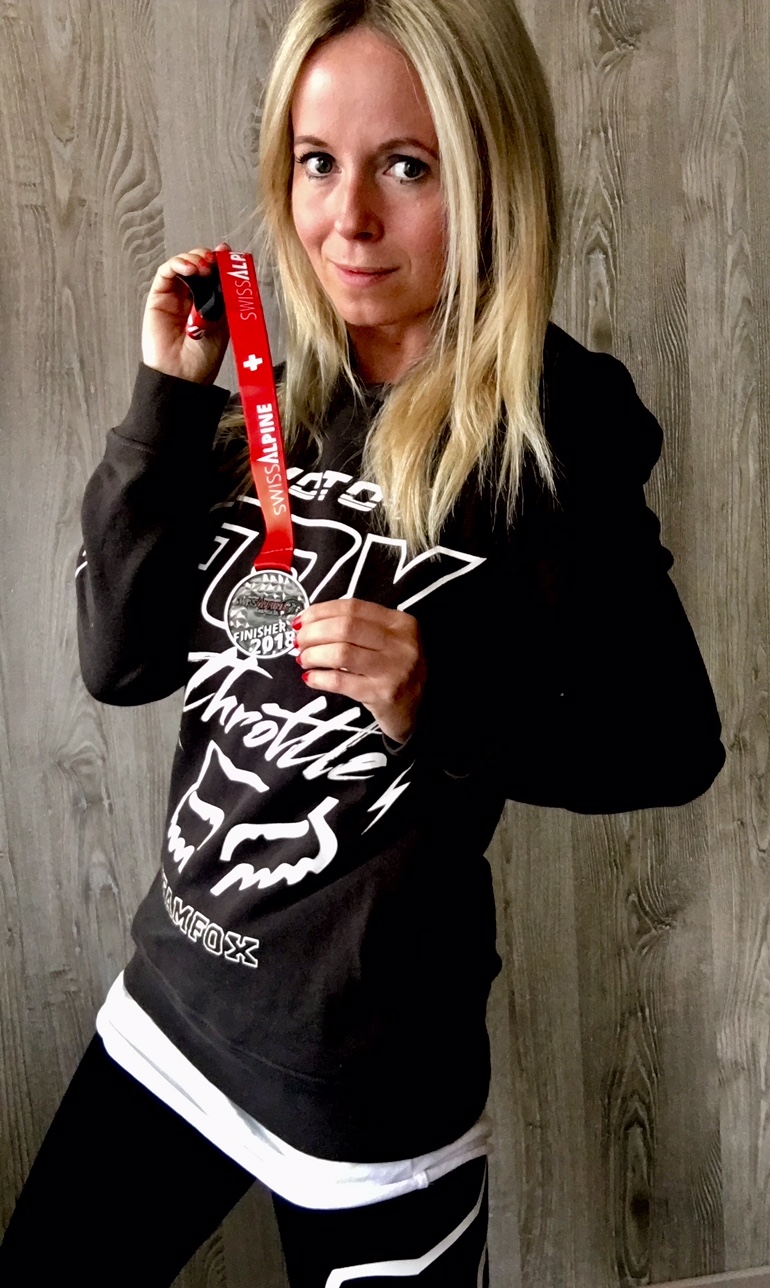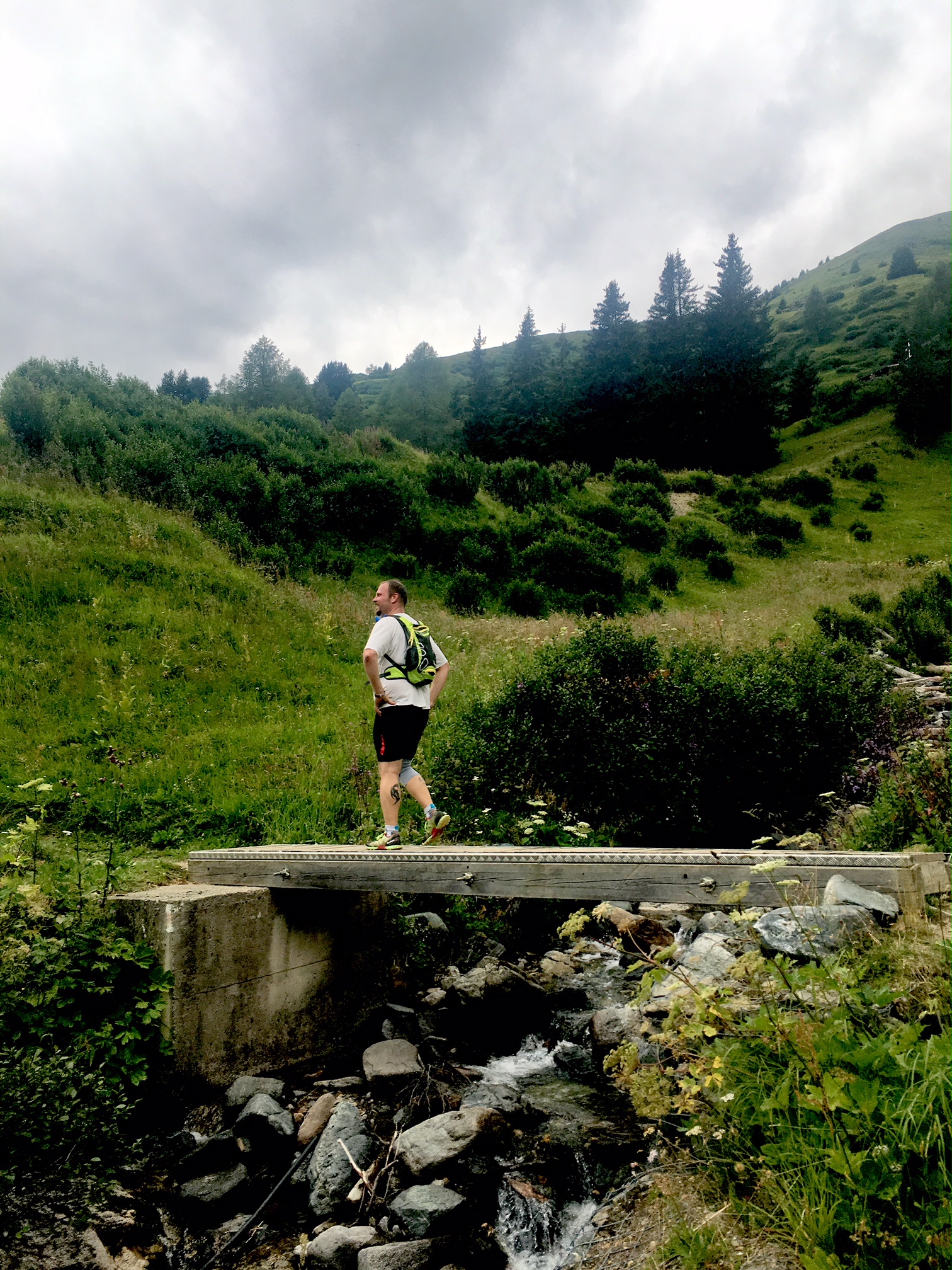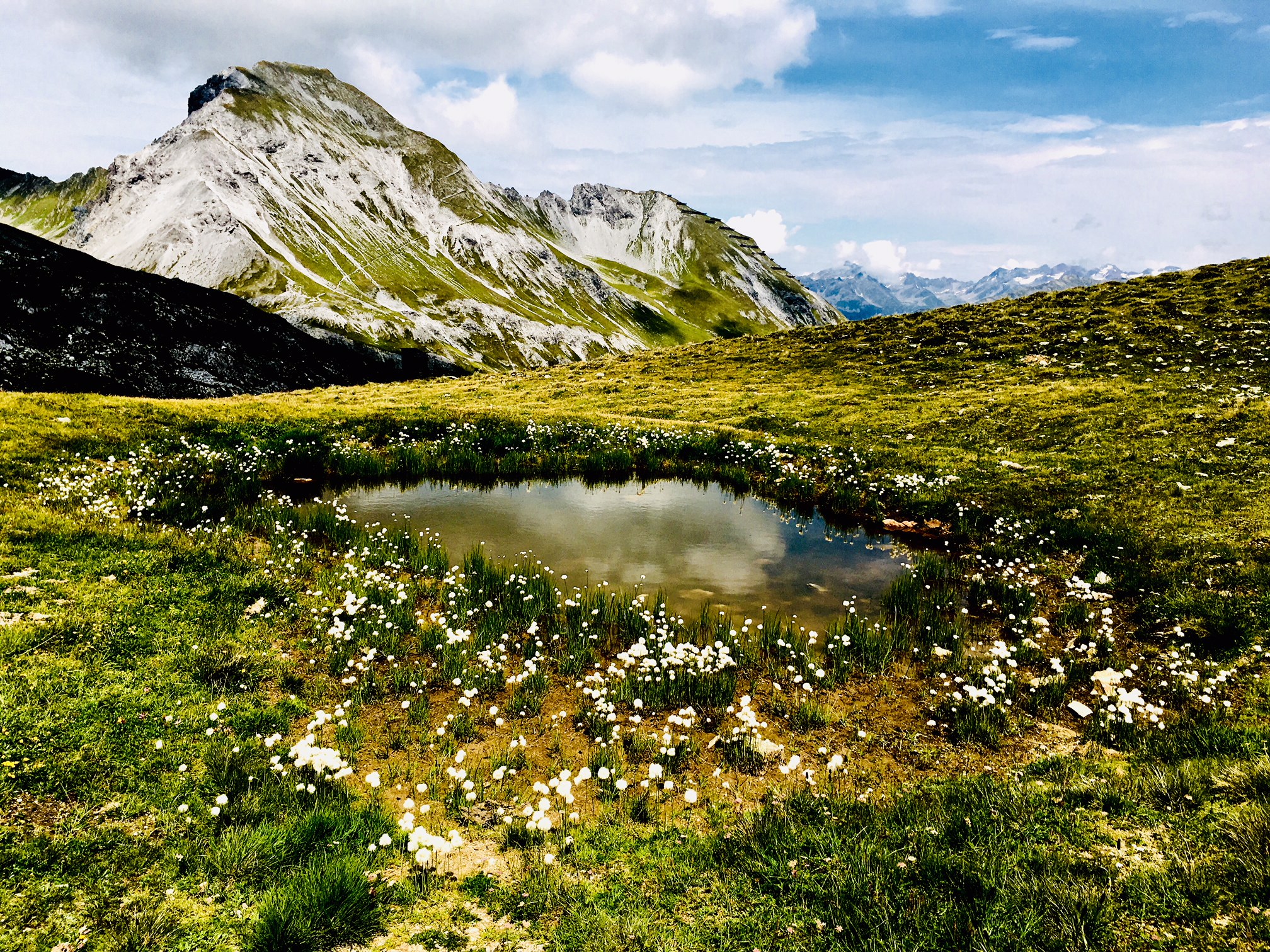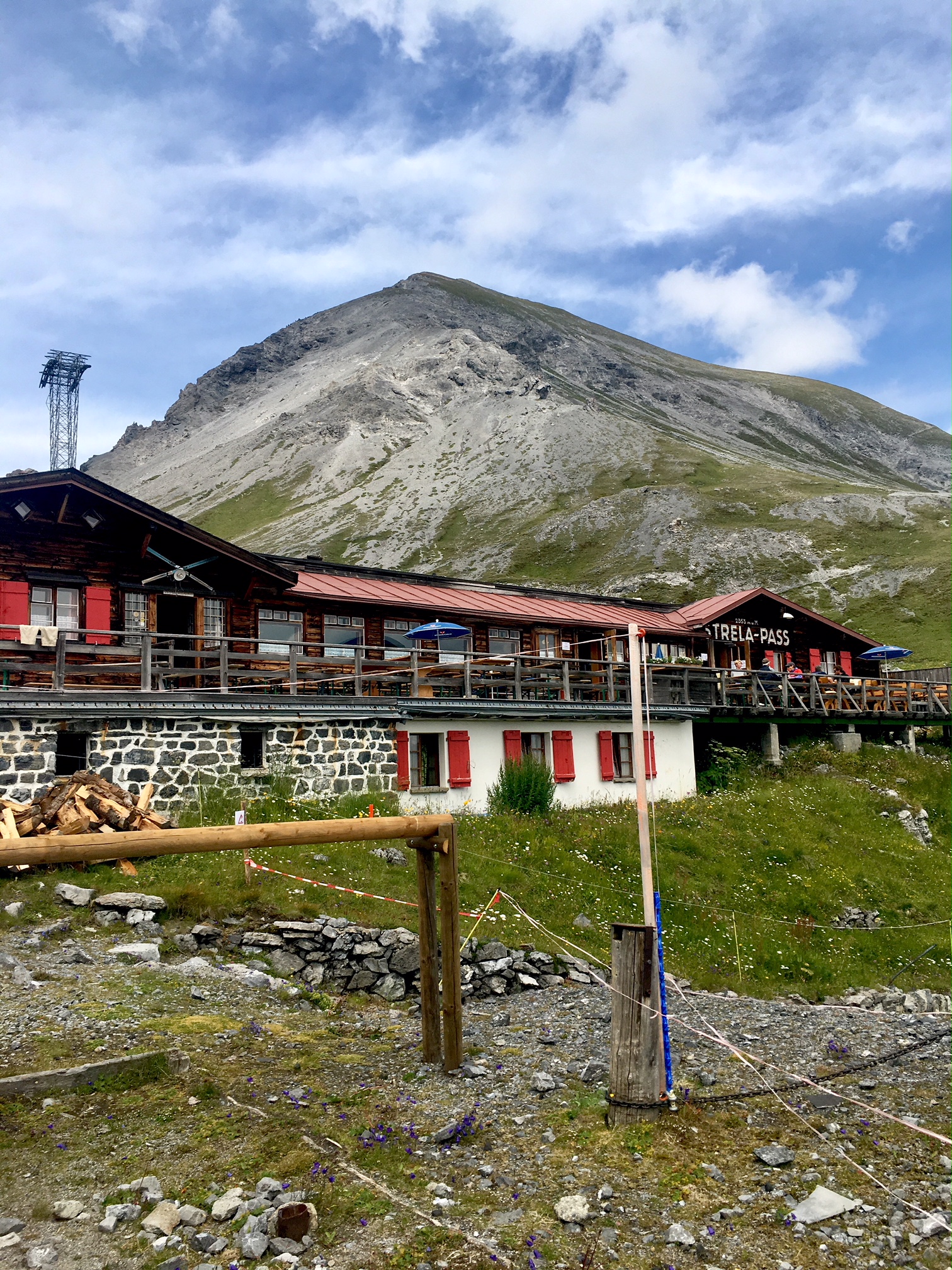(click here for English summary)
“Fight – Smile – Love!” – das ist das Lebensmotto von Extremsportlerin, Coach & Model Gela Allmann. Für mich persönlich ist Gela eine sehr große Inspiration. Sie transportiert so ein positives Lebensgefühl und inspiriert mich mit ihrer unglaublich motivierenden Art immer wieder aufs Neue. Wenn ich nach neuen Bergtouren stöbere oder auch, wenn ich mal gerade ein Formtief habe, schaue ich mir ihre Instagram Stories an und alles erscheint so viel leichter und positiver. Es gibt einfach so Menschen, die einen begeistern, andere positiv mitreißen – Menschen, zu denen man aufschaut. Für mich persönlich ist Gela genau so eine Person.

Sport-Idol Gela Allmann: eine wahre Heldin
Gela Allmann (34) wuchs in Markt Indersdorf auf und studierte Sportwissenschaft in München. Sie ist Diplom-Sportwissenschaftlerin mit dem Schwerpunkt Sportmanagement und verfügt über einen Master in „Sport, Medien und Kommunikation“. Als Profi-Sportlerin im Team Dynafit Germany war sie vor allem als Bergläuferin sowie Skibergsteigerin aktiv. Zudem arbeitet sie erfolgreich als Model, Moderatorin und Coach.
Bei einem Foto-Shooting für die Zeitschrift Fit for Fun verunglückte Gela im April 2014 auf einem Berg in Island schwer. Kurz darauf scheint ihr Leben als Sportlerin und Model zu Ende zu sein. Nach einem quälend langen Sturz 800 Meter über Felsen und Eis gleicht ihr Körper einem Trümmerhaufen. Doch sie hat überlebt und begibt sich mit überwältigendem Kampfeswillen auf einen zähen, schmerzhaften Weg: von der völligen Bewegungslosigkeit im Krankenbett, kleinen Etappenzielen während der Reha bis zum ersten Berggipfel nach dem Unfall. Alleine beim Lesen und Schreiben dieser Zeilen bekomme ich schon wieder Gänsehaut.
When you click on the video, a connection is established to Youtube.com. For more information, check the Privacy Policy
Doch sie hat es geschafft, nach diesem Schicksalsschlag neu anzufangen und hat sich mit ihrer magischen, positiven Art zurück ins Leben gekämpft.
Interview mit Gela Allmann
Da ich selbst gerade wieder intensiver ins Training einsteige und bald als großer Outdoor-Fan in der Schweiz die Trails erkunde, habe ich es einfach mal als Gelegenheit genommen, Gelas Story zu erzählen und mir zugegeben auch ein paar Tipps von ihr geholt.

Wie bist Du damals zum Bergsport gekommen?
“Ich gehe schon immer mit meiner Familie in die Berge, habe aber doch 1,5h Fahrt entfernt gewohnt. Mit Anfang/Mitte 20 als ich dann ein eigenes Auto hatte und selbst losfahren konnte, bin ich von München aus oft zusammen mit meinem damaligen Freund los. Irgendwann habe ich mich dann jede freie Minute ins Auto gesetzt und bin zum Berg gefahren, habe immer mehr Freunde mit gleicher Passion kennengelernt und bin selbst immer schneller die Berge hinauf – bald im Laufschritt, weil ich die Kombination aus Laufen und Berg- und Naturerlebnis absolut faszinierend fand.”
Was bedeutet der Bergsport für Dich?
“Berge bedeuten für mich immer Freiheit, Naturerlebnis, Kopf frei bekommen, durchschnaufen, Zeit zu Reflektieren, eigene Grenzen austesten, Sport und Bewegung, Spaß mit Freunden – all das, was ich liebe und mich auch sehr erfüllt.”
Was sind Deine drei Lieblingsorte in den Bergen?
“Ach, am liebsten mag ich es direkt vor der Haustüre. Ich lebe nun in Fischbachau, quasi zwischen Spitzingsee und Schliersee und liebe alle Berge, die ich gleich mal by fair means besteigen kann. Besonders angetan haben es mir auch die Dolomiten und ich liebe das Zillertal.”
Liebst Du eher den Bergsommer oder den Winter?
“Beides ist gleich gut und es ist wunderbar, dass es beide Jahreszeiten gibt und Sommer wie Winter so geniale Sportarten bereithalten. Wenn es Neuschnee hat und der Schnee glitzert in der Morgensonne, du stampfst durch den frischen Powder, das ist großartig. Aber genauso schön ist es in luftiger Kleidung und leichtem Equipment im Sommer mit Stöcken einen Gipfel im Stechschritt zu erklimmen und die langen Sommerabende am Berg zu genießen.”
Wie sehr hat der schlimme Unfall damals Dich verändert und woher hast Du die Kraft genommen, wieder hochzukommen?
“Der Unfall hat mich in erster Linie körperlich extrem beeinträchtigt. Mein rechtes Bein ist bis heute recht stark betroffen. Ich hatte einen Abriss des Fußhebernervs und habe hier keine volle Funktion mehr. Zudem fehlen mir im rechten Knie alle vier Bänder, der Meniskus und ich habe einen stark geschädigten Knorpel, was mir eine Laufbelastung derzeit nicht wirklich möglich macht. Ich gehe also mit Stöcken bergauf und fahre mit der Bergbahn wieder hinunter oder mache eine Kombination aus Bike & Hike – steige wenige Höhenmeter wieder ab. Der Weg, überhaupt wieder dorthin zu kommen hat mich ein halbes Jahr stationären Klinikaufenthalt und eine Reha und Physiobehandlung bedeutet, die bis heute andauert.
Psychisch und mental hat mich der Unfall in zweiter Instanz sehr geprägt. Ich bin sehr viel dankbarer für jeden Tag, jeden Moment – ich habe die Endlichkeit des Lebens gespürt, da wird man sehr demütig vor dem Geschenk des Lebens. Zudem bin ich kompromissloser und ehrlicher mir selbst gegenüber geworden. Ich weiß, dass niemand anderes die volle Verantwortung für mein Leben trägt als ich selbst. Damit liegt es auch an mir selbst, ob ich im Leben glücklich bin oder nicht. Ich kann mich jeden Tag mit meinen Gedanken und Handlungen aufs neue dazu entscheiden, genau das zu tun, um ein glückliches Leben zu führen. Erst wenn ich wirklich glücklich und im Reinen mit mir bin, kann ich auch andere glücklich machen und Verantwortung für sie übernehmen – das habe ich lange nicht verstanden.”

Woher nimmst Du Deine unglaublich positive Energie?
“Also ich muss sagen, ich habe eine ganz tolle und starke Familie hinter mir, die mir tolle Werte mitgegeben hat. Hier liegt definitiv der Ursprung meiner positiven Energie. Ich weiß, dass ich nicht alleine bin – auch in der Zeit nach dem Unfall waren meine Familie, mein damaliger Partner und viele Freunde für mich bedingungslos da. Das gibt unglaublich viel Kraft. Ich ziehe auch einfach sehr viel positive Kraft aus der täglichen Dankbarkeit fürs Leben. Wenn es mal nicht so rund läuft sage ich mir: “Schlimmer geht immer!” Und dieser Spruch trifft eigentlich auch wirklich immer zu. Ob wir Situationen positiv oder negativ einstufen, das liegt in unserem eigenen Ermessen. Ich hatte so unglaublich viel Glück bei meinem Unfall. Ich denke, ich bin ein Glückskind: Ich kann gar nicht anders, als Dinge positiv zu sehen. Ich bin am Leben und habe doch sehr viele der Fäden selbst in der Hand. Scheitern, Hindernisse und Krisen gehören dazu – ich sehe sie als Lehrmeister, um an ihnen zu wachsen.”
Du bist nicht nur Skitouren-Profi, sondern auch eine Expertin in Sachen Trailrunning. Was muss man alles als Hobbyläufer beachten, um in den Sport einzusteigen?
“Hahaha, ich war – das muss ich gleich dazu sagen. Man muss Spaß daran haben und auf das eigene Gefühl hören, sich nicht selbst überfordern. Dann kommt alles andere von ganz alleine. Unter Druck und Zwang verkrampft man sich meist nur. Es geht ja beim Trailrunning auch darum, die Berge zu genießen und während des Laufens eins mit der Natur und der Bewegung zu werden, in den völligen Flow zu kommen, die Gedanken loszulassen. Das ist genial.”
Welche Ausrüstung sollte man sich zulegen und wie trainiert man für seinen ersten Lauf am besten?
“Ich empfehle leichtes Equipment – jedes Gramm mehr geht am Ende auf die Gelenke. Wichtig sind gute grippfeste Traillaufschuhe, leichte Trail-Stöcke, ein Headband oder Mütze, ein leichter Rucksack für den Transport von den wichtigsten Utensilien: Trinken, ein/zwei Riegel, eine Sonnenbrille, Sonnencreme, evtl. ein Wechselshirt und immer eine leichte Windjacke oder ähnliches, falls am Berg doch einmal ein Wetter aufzieht. Das darf man nie unterschätzen. Ich habe auch immer ein Handy für den Fall der Fälle dabei – sollte tatsächlich einmal Hilfe nötig sein.”

Ich weiß nicht, wie es Euch geht, aber ich habe schon jetzt wieder Sehnsucht nach den Bergen. Auch ich liebe dieses unglaublich tolle Gefühl auf dem Gipfel, die Ruhe, Gelassenheit und Freiheit in der freien Natur.
An dieser Stelle ein ganz großes Dankeschön an Gela für dieses tolle Interview. Für mich ist und bleibt sie eine wahre Inspiration, jemand zu dem ich aufschaue und der mich immer wieder daran erinnert, wie viele Sachen eigentlich total nebensächlich im Leben sind. – An meine männlichen Leser: Tut mir leid, Jungs. Gela ist glücklich vergeben und zwei bezaubernde Jungs in ihrem Leben. Aber ganz ehrlich: Wenn es jemand verdient hat, dann sie. Ich wünsche ihr und ihrer kleinen, zauberhaften Familie alles Glück auf dieser Welt, mit vielen magischen Bergmomenten.
xoxo
photo credits: Martin Erd Photographer
featured image: ©Michael Müller Photographer für Dynafit
—————————————————————————————————–
English Summary: Gela Allmann – German Athlete, Coach & Model
Gela Allmann (35) is a German athlete, coach and model who was a successful professional Skimountaineering & Alpine Running athlete at the Team Dynafit Germany. For me personally, she is a great inspiration, always motivating others with her positive energy.
Her contact with skis was at the age of four. Gela has always been fascinated by mountains and by endurance sports like running. But it took her more than 26 years to discover her passion for the competitive sports Mountainrunning and Skimountaineering. In fact, she first started skitouring at the age of 26 when some friends took her to a skitour in the Alpbachtal – she was totally hooked, right from the start.
In April 2014 she had a terrible accident, falling down a descent over 800 altitude meters of pure ice and snow during a fotoshooting in Iceland. Gela broke several bones in her whole body, cut the main artery of her right leg as well as the nerve, which is responsible to lift her right foot. She was literally between life and death and had to undergo many surgeries, fighting for her life.
She truly had some guardian angels and came back even stronger, inspiring with her positive attitutude towards life. For me, she is a true heroine.
Check out this English interview.












